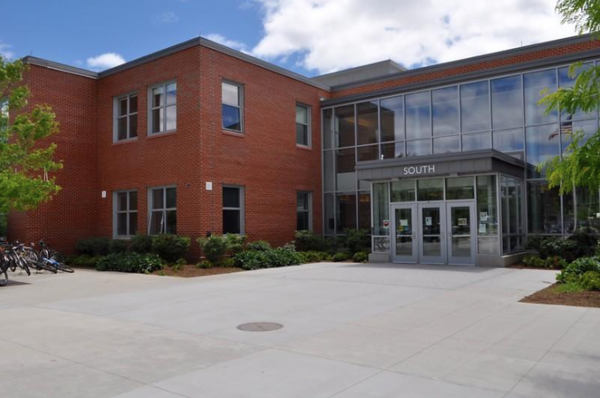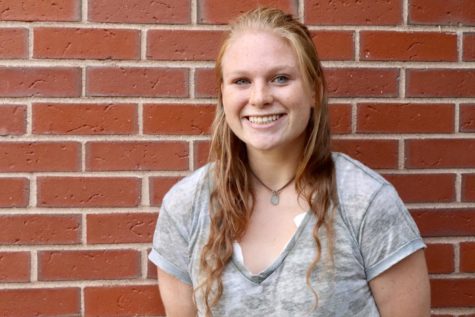Responding to hate: the aftermath of the white power symbol discovery

Credit: WSPN Staff
WHS experienced yet another hate incident this past week. “In terms of how do we combat hate, I think first is to acknowledge its presence, to try to understand where it comes from and to try to open up to these conversations,” Principal Allyson Mizoguchi said.
May 21, 2019
With tensions rising in the United States and around the world, it is undeniable that there is hatred scattered throughout society. When a symbol reading “White Power” was found in a WHS bathroom last week, the conversation of hate was once again brought up at WHS.
There have been incidents similar to this at WHS in the past, and they aren’t uncommon in other places besides Wayland either.
“[Wayland High School is] not unique to these occurrences,” Principal Allyson Mizoguchi said. “Sadly, other schools and institutions are also experiencing incidents like this.”
Knowing that hatred is spreading across the world, Mizoguchi believes students and staff can come to understand hate through discussion and make sure the topic stays in the limelight.
“[In] thinking about the abundance in sort of hate-related incidents worldwide that we hear about, I think the best thing for us [to do] is to continue [to have] conversations about hate, making sure we’re all kind of attuned to hateful situations,” Mizoguchi said.
Junior Allyson Christian believes people who were raised around hatred have been surrounded by it for their whole lives, so their decisions are based on what they grew up knowing, and this influences their decision to spread hateful thoughts.
“I know it’s bad that I wasn’t surprised [by the symbol], but stuff like this happens all the time,” Christian said. “What can you really do? These kids are going to continue to be ignorant. They’ve been ignorant their whole lives, so why would they stop now?”
Many students were annoyed after hearing about the incident.
“We can be more accepting of everyone else and realize that skin color has nothing to do with power,” an anonymous student said.
Christian also sees the reoccurring issues as a result of students lack of knowledge of black history. In February, there is a big focus on the subject as it is Black History Month, but Christian believes it should play a more prominent role in the curriculum.
“I know we have a black history unit, but it still needs to be more in-depth,” Christian said. “It can’t just be one month of just learning about black history. [White students] need to learn what we have gone through and what we are still going through.”
As for the whole school environment, one of Mizoguchi’s goals is for students to have adults they feel connected to and feel comfortable discussing conflicts like this with.
“What’s most important to me is that students and everybody here feel safe and also feel like they can talk about [it] when they are not feeling safe,” Mizoguchi said. “I think in terms of how we combat hate, the [most important thing] is to acknowledge its presence, to try to understand where it comes from and to try to open up [in] conversations [about it].”
At the end of the day, the fight is not over, and Christian understands how the past can easily translate to the future, or in other words, how history can repeat itself if people don’t change their mindsets.
“We can learn about stuff from the past, but [racism is] still going on now,” Christian said. “Racism is still alive and well.”





![Last Wednesday, the Wayland School Committee gathered to discuss a number of topics regarding the health curriculum and Innovation Career Pathway course. Another large topic of conversation was the ways to potentially mitigate distracting cell phone usage. "These [phones] are going to distract your learning and social relationships," Superintendent David Fleishman said. "That's concrete right there."](https://waylandstudentpress.com/wp-content/uploads/2025/06/Screenshot-2025-06-04-at-9.49.31 PM-1200x886.png)



























![Troy Hoyt finishes the Boston Marathon, running for the Hoyt Foundation. T. Hoyt is the son of Hoyt Foundation CEO Russ Hoyt.
“[Running a marathon] might seem like a big thing, when it’s presented to you at first, but if you break it up and just keep telling yourself, “Yes, you can,” you can start chipping away at it. And before you know it, you’ll be running the whole 26 miles, and you won’t even think twice about it.” T. Hoyt said.](https://waylandstudentpress.com/wp-content/uploads/2025/04/C36E8761-1CBB-452E-9DF2-543EF7B1095E_1_105_c.jpeg)













































dank memer • May 21, 2019 at 9:12 PM
here we go again